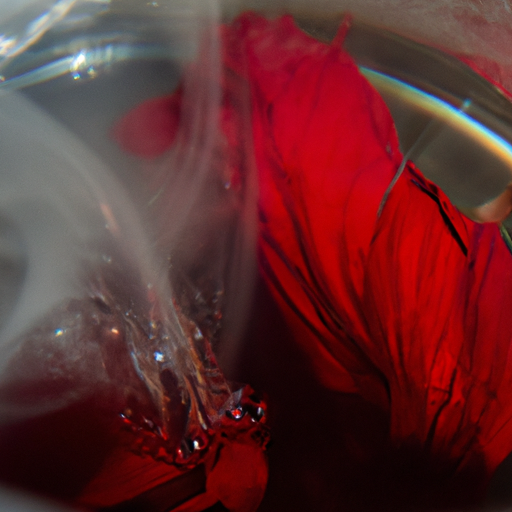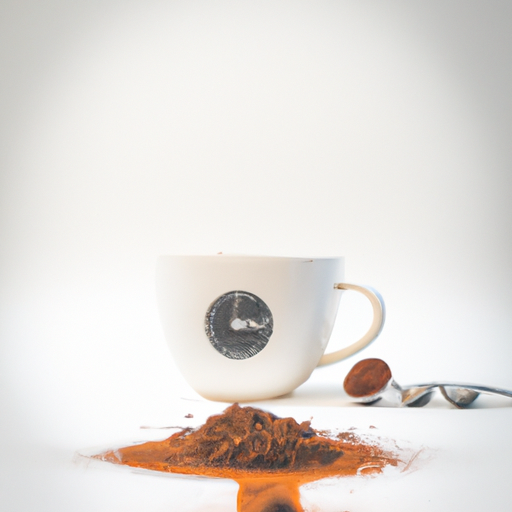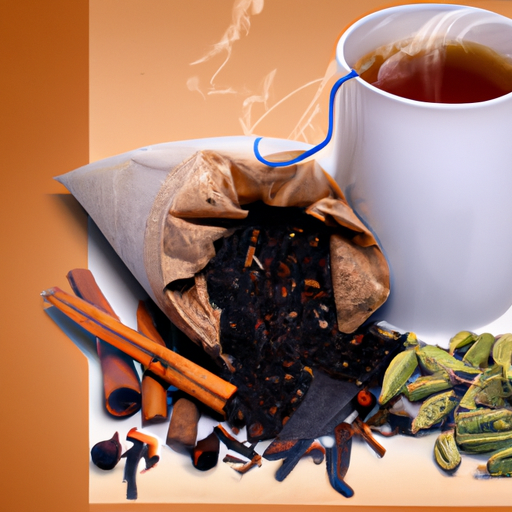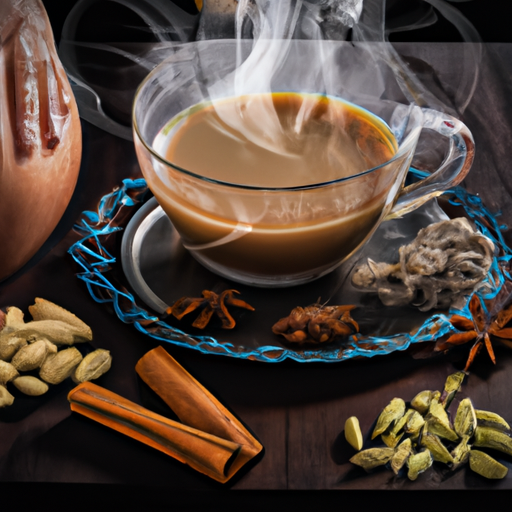As someone passionate about tea, I’ve sampled an extensive range of teas globally. However, one particular tea always manages to enthrall me with its sophisticated and fascinating taste: chai tea.
In my opinion, chai tea is not just a drink it’s an experience that engages all five senses and leaves you feeling satisfied and invigorated.
At first glance, chai tea may seem like a simple blend of spices and black tea. However, upon closer inspection, you’ll discover a symphony of flavors that dance on your tongue with each sip.
From the aroma of warm spices to the sweet creaminess of milk, every aspect of chai tea contributes to its unique taste profile. In this article, we’ll explore the key ingredients that give chai tea its distinct flavor and delve into the various nuances that make it such a beloved beverage worldwide.
Key Takeaways
- Chai tea has a unique taste that engages all five senses, with key ingredients including spices and black tea.
- The flavor profile of chai tea is complex and evolves as you drink, leaving you feeling satisfied and invigorated.
- Chai tea can be enjoyed on its own or used in desserts, with variations such as chai latte and iced chai tea.
- Chai tea has potential health benefits, including aiding digestion, providing mental clarity, and regulating blood sugar levels.
The Origins of Chai Tea
You might not know that Chai tea actually originated in India, where it was traditionally consumed as a health tonic. The Chai tea history is quite fascinating and goes back centuries. It was first brewed by Ayurvedic healers who blended together different herbs and spices to create a warming beverage that would improve digestion and boost immunity.
Over time, the drink became an important part of Indian culture and social gatherings. It was often served to guests as a sign of hospitality, and its cultural significance can still be seen today in many parts of India. As chai tea spread throughout the country, it began to take on different variations depending on the region, with each recipe incorporating unique ingredients that reflected local customs and traditions.
As someone who has grown up drinking chai tea, I can attest to its rich flavor profile that is both complex and comforting at the same time. With its blend of spices like cinnamon, cardamom, ginger, clove, fennel seeds, black pepper – chai tea has a distinct taste that leaves you wanting more. Its aroma alone is enough to uplift your mood instantly!
Now let’s explore the key ingredients of chai tea further…
The Key Ingredients of Chai Tea
The aromatic blend of spices like cinnamon, cardamom, and cloves gives chai its distinctive flavor. These ingredients are commonly used in Indian cuisine and have been incorporated into tea for centuries.
In addition to these spices, black tea is also an essential ingredient in chai tea. The bold flavor of the black tea pairs perfectly with the fragrant spices to create a warm and comforting beverage.
Chai tea can be enjoyed on its own or as an ingredient in various desserts. Its unique blend of flavors makes it a versatile ingredient that can be used in cakes, cookies, and even ice cream. Chai spiced oatmeal cookies and chai latte cupcakes are just a few examples of delicious treats that incorporate the flavors of chai tea.
There are many variations of the classic chai latte recipe, including adding vanilla extract or using almond milk instead of regular milk. Some recipes also call for honey or maple syrup as a sweetener instead of sugar. These variations allow for customization based on personal preference while still maintaining the distinct taste of traditional chai tea.
As we delve deeper into the world of chai tea, it’s important to note that its aroma plays a crucial role in its overall experience. The rich scent wafting from a steaming cup evokes feelings of warmth and comfort, making it perfect for cozying up on chilly evenings.
The Aroma of Chai Tea
Indulging in a steaming cup of chai tea is an experience that engages all your senses. From the warm creamy texture to the aromatic blend of spices that fills the air, the aroma of chai tea is comforting and invigorating at the same time. It’s like a hug in a mug, making you feel safe and energized at once.
The combination of cinnamon, cardamom, ginger, cloves, and black pepper creates an enticing aroma that can instantly transport you to another place. Each spice has its unique scent profile that perfectly complements each other in this concoction. The warm notes of cinnamon mingle with ginger’s sharpness while cardamom adds sweetness to the mix. The spiciness of black pepper provides just enough heat to balance out the flavors.
As you take your first sip, the aroma intensifies even more, making it impossible not to savor every moment. You can taste each spice as they dance on your tongue – first sweet, then spicy – a perfect harmony in every sip. But we’ll get into that later; for now, let’s continue exploring how this delightful beverage captivates our senses!
The Spiciness of Chai Tea
As soon as you take a sip of chai, the warmth of the spices hits your tongue and leaves a lingering spiciness that perfectly balances out the sweetness. The spiciness level in chai tea can vary depending on how it’s prepared, but typically it contains cinnamon, ginger, cardamom, cloves, and black pepper. These spices give chai its distinct flavor profile that is both aromatic and bold.
The spiciness in chai tea is not overwhelming or overpowering; rather, it complements the other flavors and creates a well-rounded taste experience. There’s a subtle kick to each sip that keeps me coming back for more. Additionally, the combination of different spices creates a complex flavor profile that evolves as I drink my cup of chai.
Overall, the spiciness in chai tea adds depth and character to its taste. It’s not just about being spicy for the sake of being spicy; rather, it’s an integral part of what makes chai so delicious.
As I finish my cup of chai, I’m left with a warm sensation in my throat from the spice blend. This transition into discussing the sweetness of chai tea reminds me how much I love this classic beverage – sweet yet spicy!
The Sweetness of Chai Tea
When it comes to the sweetness of chai tea, I’ve found that there are three key ingredients that can really enhance its flavor: sugar, honey, and sweetened condensed milk.
Adding a teaspoon of sugar can bring out the robust spices in chai tea. And if you’re looking for a subtle floral note, a drizzle of honey does the trick.
For those who prefer a creamier texture and an even sweeter taste, sweetened condensed milk is definitely the way to go.
Overall, these three ingredients offer a variety of options for sweetening and enhancing chai tea to your personal taste.
Sugar
You’ll find that adding sugar to your chai tea can enhance its natural spicy flavor and create a perfect balance of sweetness. A little bit of sugar can go a long way in bringing out the various flavor combinations present in chai tea.
This is because the spices used in chai, such as cinnamon, ginger, and cardamom, are naturally quite strong and can be overwhelming without the right amount of sweetness to balance them out. However, it’s important to note that too much sugar can overpower the subtle nuances of chai tea’s flavor profile.
The key is to add just enough sugar to enhance the taste without making it overly sweet. Alternatively, you can experiment with different types of sweeteners such as honey or agave syrup for a unique spin on this classic beverage.
Honey
As we discussed earlier, sugar is a common addition to chai tea. However, there are other sweeteners that can enhance the flavor profile of this delicious beverage. One such option is honey.
Honey adds a unique sweetness to chai tea that is different from plain sugar. It also has a subtle floral note that pairs well with the spices in chai tea. The best part about using honey as a sweetener is that it blends seamlessly into the tea without leaving any gritty residue at the bottom of your cup.
To give you an idea of how honey can elevate your chai experience, here’s a table outlining some pairing options:
| Type of Chai Tea | Best Honey Pairing |
|---|---|
| Masala Chai | Clover Honey |
| Vanilla Chai | Orange Blossom Honey |
| Rooibos Chai | Manuka Honey |
With these pairings, you’ll be able to taste the full complexity of both the chai tea and honey. As we move on to the next section about sweetened condensed milk, let’s keep in mind how different sweeteners can alter our perception of flavors in chai tea.
Sweetened Condensed Milk
To really take your chai tea to the next level, try adding sweetened condensed milk. The thick and creamy texture of the milk adds a richness to the beverage that perfectly complements the spices used in chai tea. When mixed with black tea and traditional chai spices such as cinnamon, cardamom, and ginger, sweetened condensed milk creates an indulgent flavor profile that is both warming and comforting.
Aside from simply adding it to your cup of chai tea, there are many recipe ideas that incorporate sweetened condensed milk into a delicious treat. One popular option is to make a homemade chai latte by combining brewed black tea with steamed milk and sweetened condensed milk for added sweetness. Another idea is to use it as a topping for desserts like ice cream or baked goods.
Overall, incorporating sweetened condensed milk into your chai tea can elevate the experience and add a touch of decadence to your day. However, it’s important not to overdo it because too much sweetness can detract from the complex flavors of the spice blend. In fact, one of the unique qualities of chai tea is its hint of bitterness which balances out its other flavors. Speaking of bitterness…
The Bitterness of Chai Tea
The bitterness in chai tea can be a turn off for some people, but others enjoy the complex flavor profile it adds. When I take my first sip of chai tea, I’m hit with a burst of boldness that wakes up my taste buds.
Here are some thoughts on the bitterness balance and flavor profile:
- The bitterness is not overpowering, but it’s definitely present enough to make an impact.
- It’s balanced out by the sweetness from the spices and sugar added to the tea.
- The combination of bitter and sweet creates a unique taste that you won’t find in any other kind of tea.
As someone who loves chai tea, I appreciate how its bitterness contributes to its overall flavor complexity. It’s like a puzzle where each piece plays an important role in creating a beautiful picture. Without this key component, chai tea just wouldn’t be the same.
Moving on to our next subtopic about ‘the creaminess of chai tea’, I must say that this is one aspect that makes me love it even more.
The Creaminess of Chai Tea
Indulging in a warm cup of chai tea is like wrapping yourself in a cozy blanket on a chilly day. Its creamy texture adds an extra layer of comfort to every sip. The creaminess exploration of chai tea is one that can’t be ignored, as it contributes greatly to the overall taste experience.
The smooth and velvety consistency of the milk or cream used in making chai blends seamlessly with the bold flavors of black tea and spices. The texture comparison between chai tea and other types of teas is starkly different, with most teas having a lighter body and less density than chai. This creaminess adds depth to every sip, making it more filling and satisfying. It also mellows out any bitterness that may come from the strong black tea used as the base for most chai blends.
As you take another sip, you can’t help but notice how the creaminess coats your tongue and creates a lingering aftertaste that leaves you wanting more. With each sip being both indulgent and comforting, it’s no surprise why many people turn to this beverage for relaxation or when they need a pick-me-up during their day.
Moving forward to the subsequent section about the serving methods of chai tea, let’s explore how different approaches can affect its overall taste profile.
The Serving Methods of Chai Tea
You can enhance your chai tea experience by exploring different serving methods. There are numerous variations of chai tea, and each one has unique characteristics that can be brought out through the brewing process.
One popular variant is masala chai, which includes a blend of spices such as cinnamon, ginger, cardamom, and cloves. To fully appreciate this type of chai tea, it’s best to brew the mixture with water and milk until it becomes frothy.
Another way to serve chai tea is iced. This method involves preparing a strong batch of hot chai tea and then adding ice cubes to cool it down. Some people prefer to add sweeteners or creamers to their iced chai tea for added flavor. As with hot chai tea, there are many variations of iced chai including those that incorporate fruit juices or other flavors.
Brewing techniques for chai tea also play an important role in its taste profile. For instance, some people prefer to steep their loose leaf or teabag in hot water before adding milk or sweeteners while others choose to boil the ingredients together in a pot on the stove. The amount of time spent steeping also affects the flavor intensity of the final product.
By experimenting with different brewing techniques and serving methods, you can discover new ways to enjoy this delicious beverage. As you explore various serving methods for your cup of chai tea, keep in mind that not only does it offer a delightful taste but it also has potential health benefits worth exploring further.
The Health Benefits of Chai Tea
If you’re looking for a warm, comforting drink with potential health benefits, try sipping on a cup of chai. This Indian-originated tea is full of spices that not only add flavor but also have various positive effects on the body.
Here are some of the reasons why you should consider incorporating chai into your daily routine:
-
Chai tea and digestion: The combination of ginger, cinnamon, and cardamom in chai helps stimulate digestion. Ginger has been used as a digestive aid for centuries due to its ability to reduce inflammation and relieve nausea. Cinnamon can help regulate blood sugar levels by slowing down the breakdown of carbohydrates in the body, which can lead to better digestion overall.
-
Chai tea and mental clarity: The black tea base in chai contains caffeine which can provide an energy boost and improve mental focus. Additionally, the combination of spices in chai has been shown to have calming properties that may help reduce stress levels.
Overall, drinking chai tea can be a great addition to your daily routine if you’re looking for a warming beverage with potential health benefits. With its unique blend of spices, it’s no wonder why this drink has become so popular around the world. So next time you need a pick-me-up or want something soothing before bed, give a cup of chai a try!
Frequently Asked Questions
What are the different types of chai tea and how do they differ in taste?
As a lover of spiced blends, Masala chai has become one of my favorite drinks. There are several types of chai tea, each with its unique flavor profile.
The most common ones include Indian-style masala chai, which is made by brewing black tea with a blend of aromatic spices like cardamom, cinnamon, ginger, and cloves. This type of chai tea has a warm and spicy taste that can be customized to your liking depending on the amount of spice used.
Other varieties include Kashmiri chai and Bombay cutting chai that have distinct flavors due to the addition of ingredients like almonds or lemon juice.
Overall, Chai tea is a rich and flavorful drink that offers a perfect balance between sweetness and spice when it comes to taste.
Can chai tea be made with non-dairy milk alternatives?
Yes, chai tea can absolutely be made with non-dairy milk alternatives. In fact, it’s quite common for people to use almond, soy, or coconut milk as a substitute for regular dairy milk when making chai tea.
Not only does this allow individuals who are lactose intolerant or vegan to enjoy the delicious taste of chai tea, but it also provides nutritional benefits such as additional vitamins and minerals.
When brewing chai tea with non-dairy milk alternatives, it’s important to keep in mind that the flavor may differ slightly from traditional chai teas made with cow’s milk. Experimenting with different types of non-dairy milks and brewing techniques can help you find the perfect balance of flavors that suits your personal preferences.
Are there any specific spices used in chai tea that give it a unique taste?
When it comes to the spice combination in chai tea, there are a few key players that give it its unique taste. Cinnamon, ginger, cardamom, and cloves all work together to create a warm and spicy flavor profile.
The cinnamon brings a sweet warmth while the ginger adds a bit of heat. Cardamom provides an earthy sweetness that pairs perfectly with the warm flavors of the other spices. Finally, cloves add depth and complexity to the overall flavor notes.
The combination of these spices is what makes chai tea so deliciously complex and comforting. It’s no wonder why it has become such a beloved beverage around the world!
How does the taste of chai tea compare to other types of tea?
When it comes to tea taste comparison, there are a multitude of factors that come into play. The type of tea leaf, the origin and processing method, as well as any added flavors or spices all contribute to the final product.
Chai tea flavor is particularly unique due to its blend of spices such as cinnamon, cardamom, ginger, and cloves. This gives chai tea a warm and spicy taste profile with hints of sweetness. In comparison to other types of teas like green or black tea, which tend to have a more straightforward taste profile, chai offers an intricate and nuanced flavor experience that is both comforting and indulgent.
Overall, chai tea’s complex yet balanced flavor makes it a popular choice for those looking for something different from their usual cuppa.
What are some common flavor profiles found in chai tea blends?
As a lover of chai tea, I’ve discovered that there are several common flavor profiles found in chai blends. Spice levels can vary greatly, with some blends being more heavily spiced than others. However, the key to a good chai blend is finding the perfect balance between spice and sweetness.
Some blends may have a stronger emphasis on cinnamon or cardamom, while others may use exotic spices like star anise or fennel seeds. The addition of milk and honey can also enhance the sweetness in a traditional chai blend.
Overall, a well-crafted chai tea should provide a harmonious combination of warm spices and sweet flavors that leave you feeling comforted and satisfied after each sip.
Conclusion
In conclusion, I’ve come to appreciate the unique taste and aroma of chai tea. Its origin from India and blend of spices like cinnamon, cardamom, and ginger make it a truly exotic experience. The spiciness is balanced by the sweetness of honey or sugar, while the creaminess of milk gives it a smooth texture.
Coincidentally, as I was sipping on my chai tea this morning, I overheard someone say that they’d never tried it before. It made me realize how fortunate I am to have discovered such a delicious drink.
Whether you enjoy it hot or iced, in a latte or simply brewed with water and spices, chai tea is definitely worth trying at least once. Besides its delectable taste, it also offers numerous health benefits like aiding digestion and reducing inflammation.
So why not give it a chance? Who knows, you might just discover your new favorite beverage!










